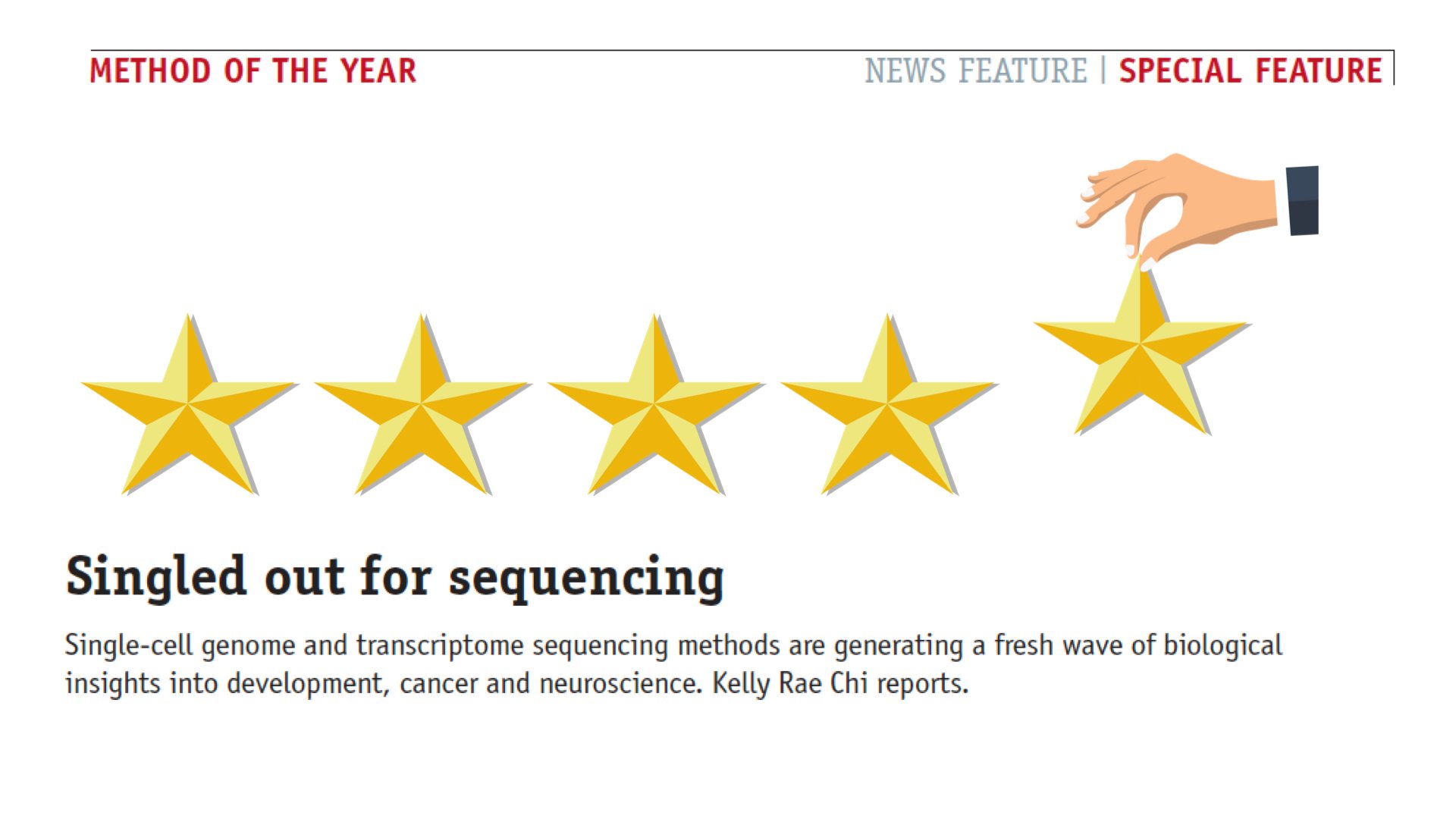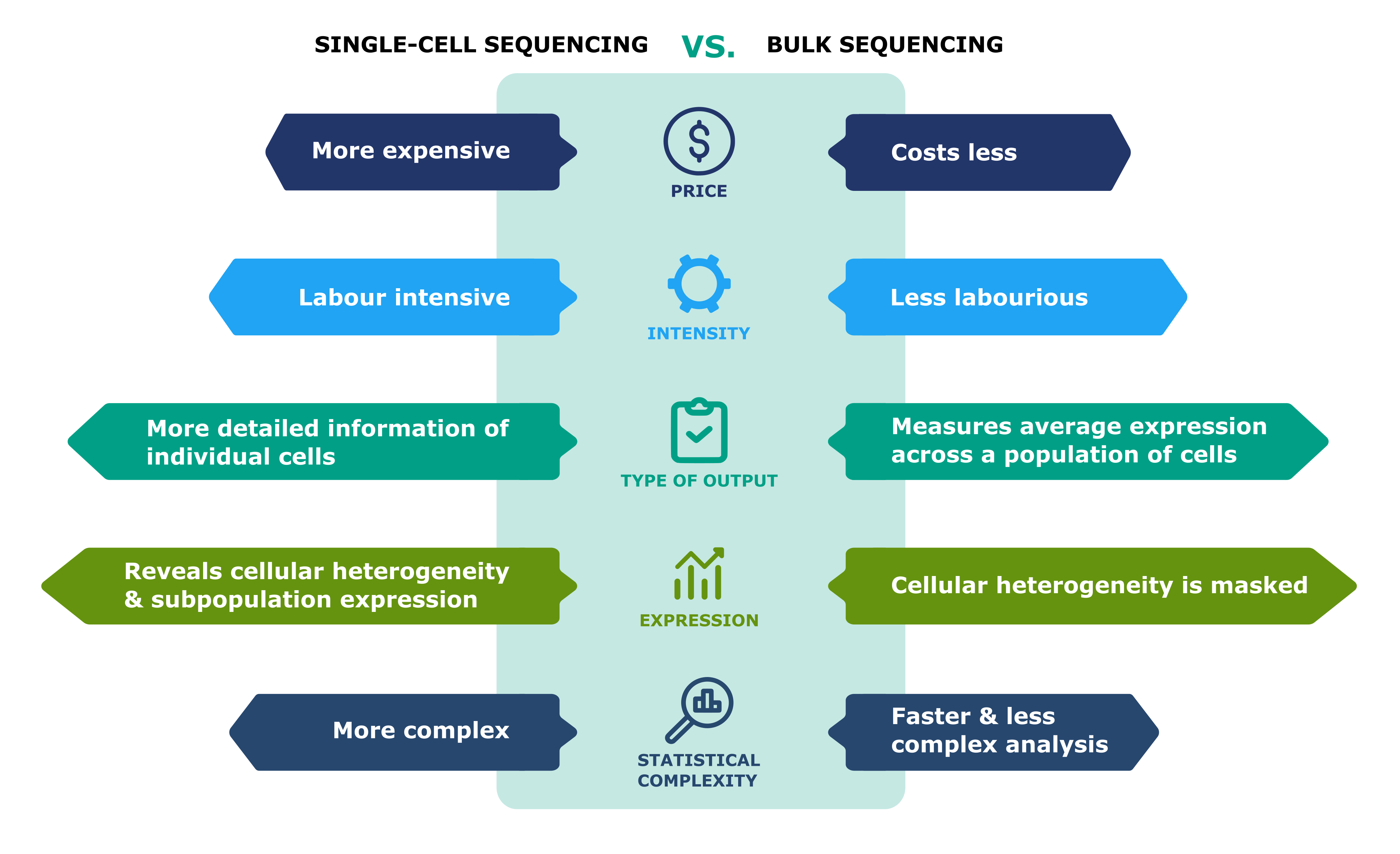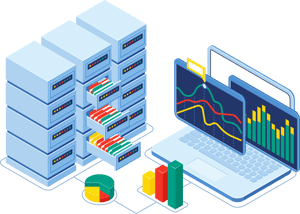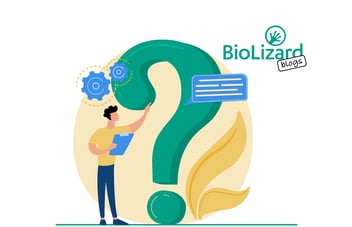Single-cell vs. bulk sequencing: which one to use when?
 Winner of the 2013 Nature’s method of the year: single-cell sequencing. It’s no surprise that this method has gained in popularity ever since. Before the award, bulk sequencing methods were the standard for analyzing the transcriptome and other omics. Throughout the years, more single-cell sequencing methods emerged. Why? Because…
Winner of the 2013 Nature’s method of the year: single-cell sequencing. It’s no surprise that this method has gained in popularity ever since. Before the award, bulk sequencing methods were the standard for analyzing the transcriptome and other omics. Throughout the years, more single-cell sequencing methods emerged. Why? Because…
… it achieved a higher efficiency.
… it had a reduction in costs.
… and an increasing number of platforms got commercialised.
It comes as no surprise that researchers started to apply single-cell sequencing more and more. Because of this development, people tend to think bulk sequencing is becoming less relevant these days. Is this true?
We’d say no. Both technologies have their advantages. It mainly depends on what you’re trying to accomplish in your research. Let’s look into it…
Why did single-cell sequencing gain popularity?
Let’s take a step back and look at biology as a whole. You have a body, organs, tissues: all of them consist of cells. Although within a tissue, many cells sometimes look alike, their functionalities can be very different.
A simple analogy could be looking at the stars with the bare eye, compared to using a telescope. From afar, cells look like each other, but a closer look tells us something else. They have similarities but specific functions too.
That’s where single-cell sequencing comes into the picture. Previously, researchers weren’t able to ‘look at the stars through a telescope’. Today, the technology creates a fantastic opportunity to study cells with higher resolution on an individual level.
As popularity grew, single-cell technology has also evolved:
- Labs need less sample material to analyse.
- Sequencing machines are faster and cheaper, with improved sensitivity.
- Single-cell multimodal omics tools were developed, allowing researchers to measure multiple modalities of a single cell simultaneously. (e.g. transcriptomics and genomics).
- Library preparation protocols – such as the 10X Chromium – became more versatile, cheaper, more sensitive, and with a higher yield.
- And things are still evolving every day….
The growing number of datasets with their increasing size and complexity is a challenge we happily see coming our way. BioLizard specialises in analysing biological data: working on single-cell projects is a big part of what we love to do.
The role of bulk vs. single-cell sequencing
Before single-cell sequencing arrived, bulk sequencing was the preferred method. It enabled the study of the genome (DNA) and transcriptome (RNA), among other omics. When single-cell sequencing came up, researchers have been able to:
- Better predict how a disease would evolve,
- uncover the mechanism of action for certain drugs,
- discover new cell types,
- and more…
The technology holds huge potential in diseases such as cancer or neurodegeneration.
Let’s say you have a group of people with lung cancer. The goal of your research is to understand what’s happening on a molecular level. With bulk RNA sequencing, you can compare the results of the patients with lung cancer with those that are healthy. This will provide an overview of the average differences in gene expression. For certain scenarios, this has proven to be sufficient. For instance, when discovering biomarkers for cancer, or to study the biology of diseases.
However, more often than not, the answers may lie behind certain cell types. This requires looking at the expression of genes in individual cells instead of an average representation. In that case, single-cell sequencing provides the potential to find molecular differences which are only linked to specific cell types.
Lastly, it doesn’t have to be an either/or story. Integrating data from bulk and single-cell sequencing experiments can give valuable results!
Single-cell vs. Bulk sequencing
To round things up, let’s have a face-off between bulk and single-cell sequencing. How do they rank up against each other based on five criteria?

Dealing with higher complexity
It’s not a surprise that single-cell sequencing methods generate more complex and richer datasets as compared to bulk sequencing. This higher complexity means more room for misinterpretations and deriving wrong conclusions.
Need an extra pair of experienced eyes during the
statistical analysis of your single-cell analysis project?
Get in touch!







